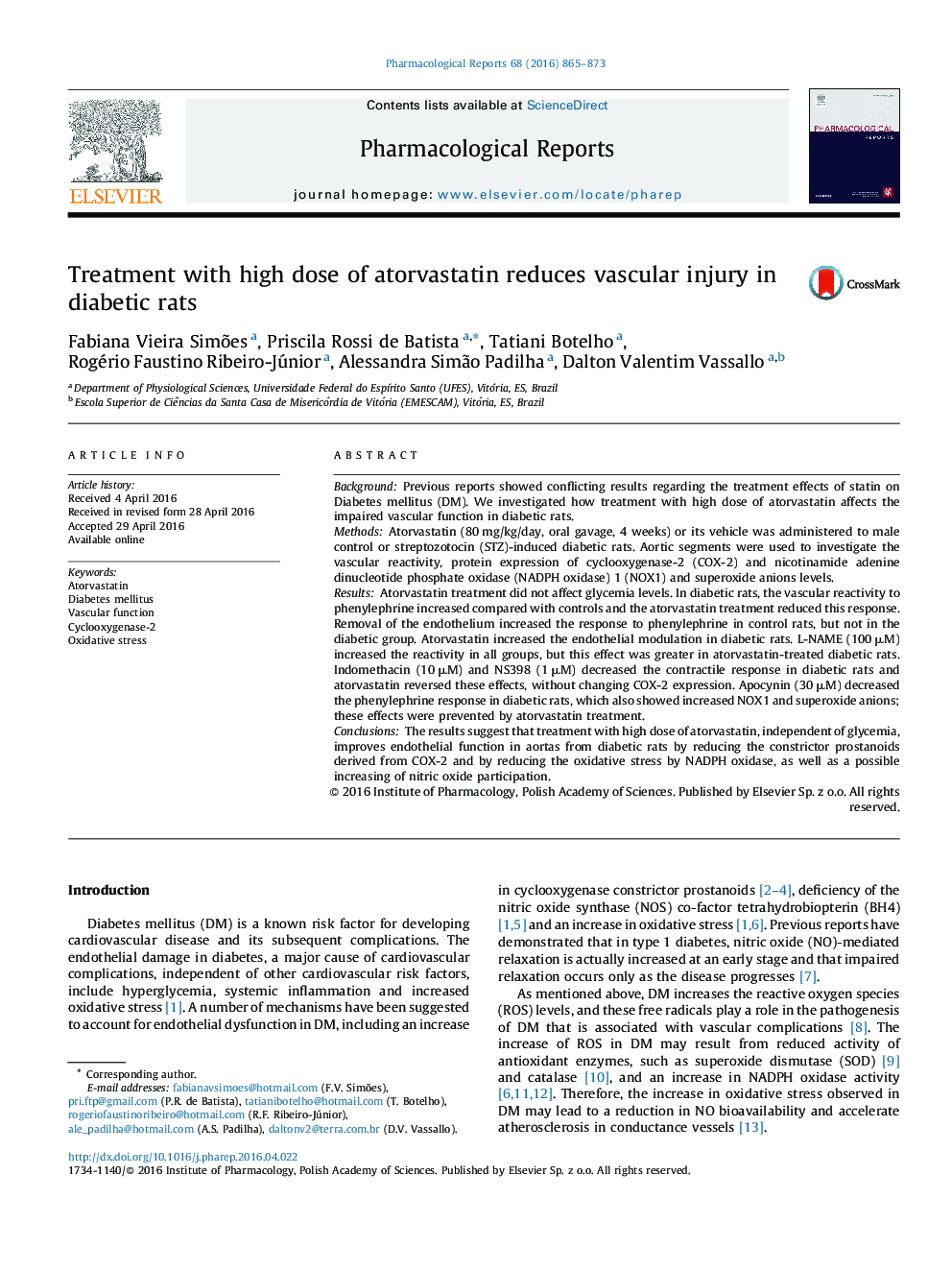| کد مقاله | کد نشریه | سال انتشار | مقاله انگلیسی | نسخه تمام متن |
|---|---|---|---|---|
| 2010671 | 1066986 | 2016 | 9 صفحه PDF | دانلود رایگان |
• Atorvastatin improves impaired endothelial function in aorta from diabetic rats.
• Atorvastatin reduces vasoconstrictors derived from COX-2 and O2− by NADPH oxidase.
• Atorvastatin effects on vascular function are independent of hyperglycemia.
BackgroundPrevious reports showed conflicting results regarding the treatment effects of statin on Diabetes mellitus (DM). We investigated how treatment with high dose of atorvastatin affects the impaired vascular function in diabetic rats.MethodsAtorvastatin (80 mg/kg/day, oral gavage, 4 weeks) or its vehicle was administered to male control or streptozotocin (STZ)-induced diabetic rats. Aortic segments were used to investigate the vascular reactivity, protein expression of cyclooxygenase-2 (COX-2) and nicotinamide adenine dinucleotide phosphate oxidase (NADPH oxidase) 1 (NOX1) and superoxide anions levels.ResultsAtorvastatin treatment did not affect glycemia levels. In diabetic rats, the vascular reactivity to phenylephrine increased compared with controls and the atorvastatin treatment reduced this response. Removal of the endothelium increased the response to phenylephrine in control rats, but not in the diabetic group. Atorvastatin increased the endothelial modulation in diabetic rats. L-NAME (100 μM) increased the reactivity in all groups, but this effect was greater in atorvastatin-treated diabetic rats. Indomethacin (10 μM) and NS398 (1 μM) decreased the contractile response in diabetic rats and atorvastatin reversed these effects, without changing COX-2 expression. Apocynin (30 μM) decreased the phenylephrine response in diabetic rats, which also showed increased NOX1 and superoxide anions; these effects were prevented by atorvastatin treatment.ConclusionsThe results suggest that treatment with high dose of atorvastatin, independent of glycemia, improves endothelial function in aortas from diabetic rats by reducing the constrictor prostanoids derived from COX-2 and by reducing the oxidative stress by NADPH oxidase, as well as a possible increasing of nitric oxide participation.
Journal: Pharmacological Reports - Volume 68, Issue 5, October 2016, Pages 865–873
